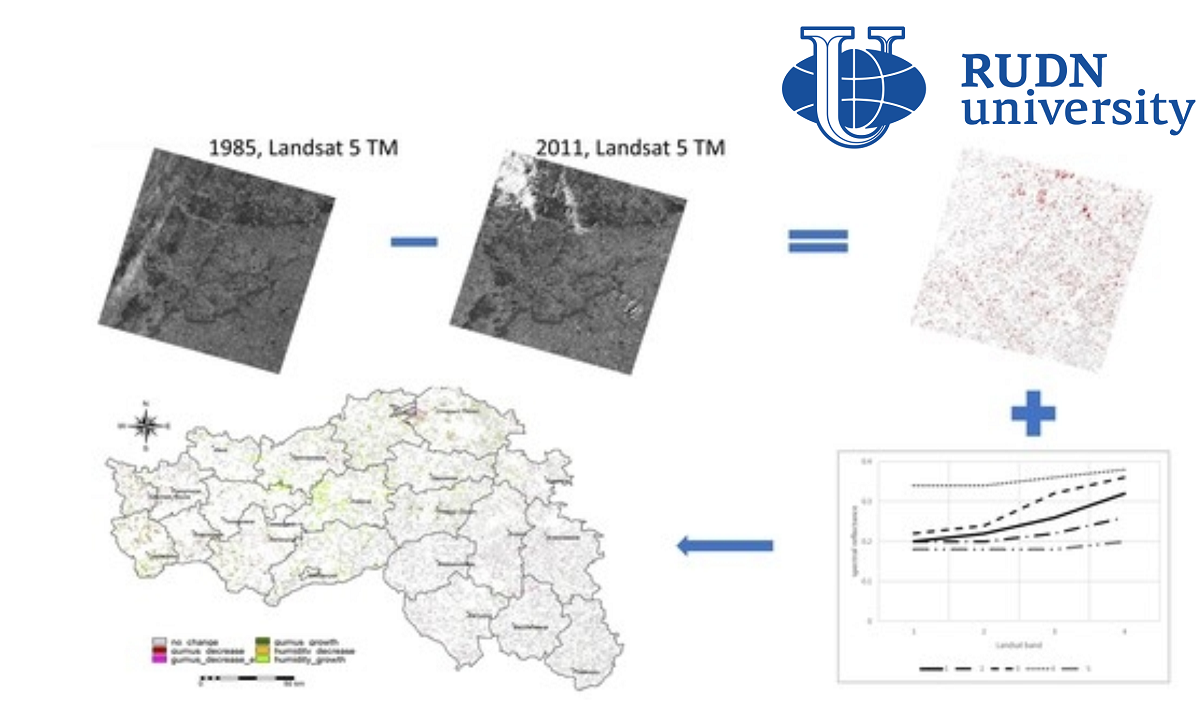RUDN Scientists Proposed Using Satellite Images to Assess the State of Chernozems

Chernozems are the most fertile soils. Agricultural crops can be grown on them even without fertilizers. With continuous long-term use, the soils are depleted — they lose fertility. To avoid this, it is necessary to regulate the intensity of use, and this requires objective and timely information about the state of the soil. However, often existing monitoring systems cannot provide such information — due to lack of funding, outdated equipment, lack of specialists. RUDN agronomists with colleagues from Belgorod State University proposed using a new method for assessing the state of chernozems — satellite photos. The researchers analyzed satellite images of the Belgorod region since 1985. This region specializes in agricultural production, and about 77% of its territories are occupied by chernozem soils.
“Basically, annual grain crops are grown in the Belgorod region — for example, wheat and barley, as well as corn, sunflower, sugar beet. At the beginning of the XXI century, the administration of the region took a course on the ecologization of agriculture and introduced the so-called adaptive landscape farming system. This led to an increase in the proportion of annual and perennial grasses in the composition of crops and a decrease in row crops, which may have reduced the agrogenic load on the soil of arable land,” Doctor of Agricultural Sciences Igor Savin, Professor of the Department of Rational Nature Management of the RUDN.
Scientists took color satellite images of Landsat TM5 for the period from 1985 to 2011. The observation interval was 15 days. RUDN agronomists chose photographs of the area taken on clear days to avoid color distortions. Then three independent experts assessed whether there were differences between the color profiles of soils in photographs from different years. According to the color change, it was concluded what transformations had occurred with the chernozem: for example, the lightening of the soil indicated its drying out and a decrease in the amount of humus — a fertile organic component. The darkening of the surface, on the contrary, could be caused by waterlogging.
The agronomists of the RUDN assessed the condition of 56% of the agricultural territories of the Belgorod region. It turned out that the color spectra of 89% of the area of the analyzed chernozem soils have not changed over the past 35 years. In the remaining soils, changes occurred: an increase in soil moisture was observed on 2.5% of the territory, an increase in humus content by 2%, and a decrease in the amount of humus by 0.9% due to plowing or soil erosion.
“Since the beginning of the XXI century, the condition of the soils in the Belgorod region has improved — in some areas the humus content in the chernozem has noticeably increased. The decrease observed in other places may be associated with plowing, as well as with the processes of water erosion of soils on the slopes. The analysis of satellite images used by us can be proposed to be used in other regions of Russia in order to promptly assess the state of local soils and regulate land use,” Candidate of Technical Sciences Peter Dokukin, Head of the Scientific Department of the RUDN.
The study is published in Remote Sensing.
The project to develop a cellular model of the placenta became the winner in the Scientific Materials category of the Young Scientists 3.0 competition, organized with the support of the Presidential Grants Foundation and T-Bank.
Ten scientific journals published by RUDN University have been included in the highest level of the state list of scientific publications, the White List.
Forests are not only the lungs of the planet, but also home to millions of species. However, it has remained unclear how underground interactions between trees and fungi affect forest species richness in different climatic conditions. Previous studies have yielded conflicting results: in some regions, the dominance of certain fungi reduced tree diversity, while in others it increased it.
The project to develop a cellular model of the placenta became the winner in the Scientific Materials category of the Young Scientists 3.0 competition, organized with the support of the Presidential Grants Foundation and T-Bank.
Ten scientific journals published by RUDN University have been included in the highest level of the state list of scientific publications, the White List.
Forests are not only the lungs of the planet, but also home to millions of species. However, it has remained unclear how underground interactions between trees and fungi affect forest species richness in different climatic conditions. Previous studies have yielded conflicting results: in some regions, the dominance of certain fungi reduced tree diversity, while in others it increased it.